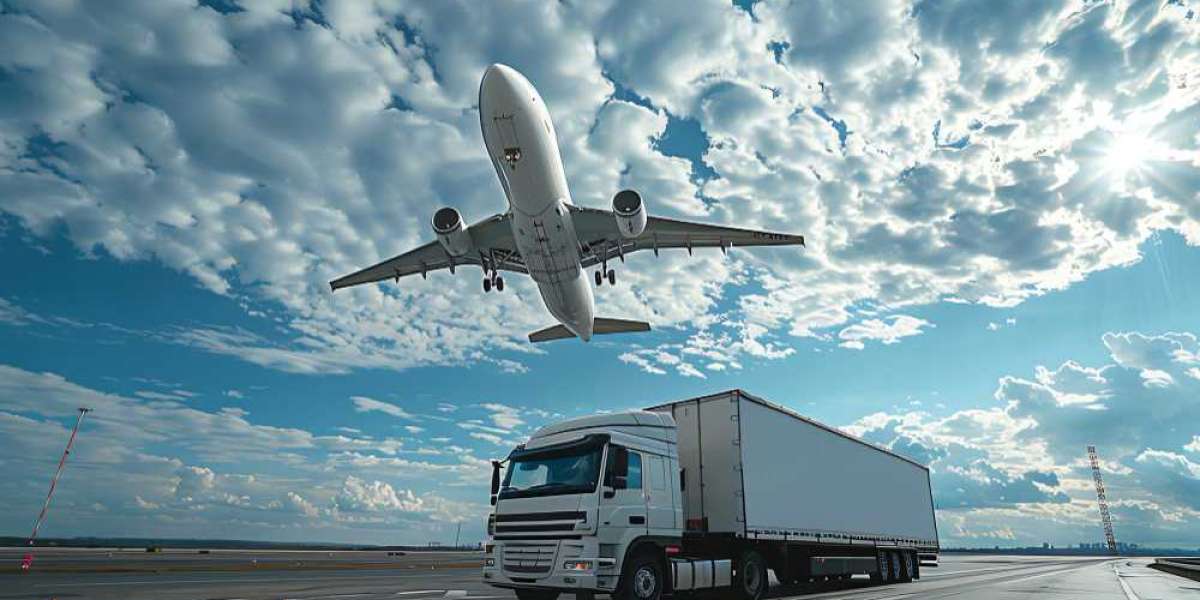In today’s fast-paced global economy, businesses are constantly seeking ways to optimize their supply chains, reduce delivery times, and ensure that products reach customers in the quickest, most efficient way possible. Air freight has emerged as one of the leading solutions for international shipping, offering speed, security, and reliability for transporting goods across vast distances. But what exactly is air freight, and why is it so important in modern logistics?
What is Air Freight?
Air freight refers to the transportation of goods via air, typically using cargo planes or even commercial aircraft with specially designated cargo space. Unlike traditional shipping methods, such as sea or land transport, air freight is known for its speed and ability to connect businesses across the globe in record time. It’s a critical element of the global supply chain, particularly for time-sensitive, high-value, or perishable goods.
Types of Goods Transported by Air Freight
Air freight is used for a wide variety of goods. Some of the most common types include:
- Perishable Goods: Food items such as fruits, vegetables, and pharmaceuticals that require fast transport to maintain freshness.
- High-Value Items: Luxury goods, electronics, and jewelry that require secure and fast shipping to protect their value.
- Urgent Shipments: Items that need to be delivered urgently, such as replacement parts for machinery or medical supplies.
- Documents and Legal Papers: Legal documents or contracts that must be delivered quickly to avoid delays in business operations.
Benefits of Air Freight
Speed and Efficiency: Air freight is by far the fastest shipping method, making it ideal for urgent shipments. While sea freight can take weeks, air transport can get goods to their destination within a matter of hours or days.
Global Reach: With major airports in virtually every country around the world, air freight allows businesses to easily access international markets. Cargo planes can reach even remote locations, expanding the reach of global trade.
Reliability: Air freight services are known for their punctuality. Airlines are typically on time, with fewer delays compared to other forms of transportation like sea or rail, which can be affected by weather or other external factors.
Security: Air freight is one of the most secure methods of shipping. Cargo planes are equipped with advanced security systems, and strict regulations are in place to ensure the safety of goods during transit.
Reduced Risk of Damage: Air cargo tends to experience less handling than items moved by sea or land, meaning there’s less chance of goods being damaged during transit.
Drawbacks of Air Freight
While air freight offers numerous advantages, there are also a few drawbacks to consider:
Cost: Air freight is significantly more expensive than other forms of transport. The price is determined by factors such as weight, volume, and the distance traveled. For smaller or low-value shipments, air freight might not be cost-effective.
Limited Cargo Size: Cargo planes have limited space compared to sea vessels or freight trucks, which means larger or bulkier goods might not be suitable for air freight. Additionally, some oversized or hazardous items cannot be shipped by air due to regulations.
Environmental Impact: Air travel has a considerable carbon footprint. As the demand for air freight grows, so does its environmental impact. Many companies are now exploring more sustainable logistics solutions as part of their corporate responsibility efforts.
How Does Air Freight Work?
The process of air freight involves several steps, which include:
Booking and Documentation: The first step is to book space with an air freight provider and prepare all necessary documentation, such as the air waybill, which acts as a contract between the shipper and the carrier.
Pickup and Packing: The goods are picked up from the origin and packed securely for air transport. Special packaging is often required to protect goods during transit, especially for delicate or high-value items.
Customs Clearance: International shipments require clearance through customs at both the origin and destination countries. This involves checking documentation, paying any applicable duties or taxes, and ensuring compliance with all regulations.
Loading and Transportation: The cargo is then loaded onto the aircraft and transported to its destination. Depending on the shipment, there may be layovers or transfers to connecting flights.
Delivery: Once the cargo reaches its destination airport, it goes through customs clearance again and is delivered to the final recipient or distribution point.
Air Freight Services: What to Look For
When choosing an air freight provider, it’s important to consider a few key factors:
- Speed and Reliability: Look for a carrier with a proven track record for punctual deliveries and efficiency.
- Cost: While air freight is generally more expensive, rates can vary significantly. Be sure to get a clear understanding of the pricing structure and any additional fees.
- Insurance: Consider purchasing insurance for high-value items. While air freight is secure, there’s always a small risk of damage or loss.
- Customer Service: A company with excellent customer service can help navigate any issues or challenges that arise, from delays to customs problems.
The Future of Air Freight
The air freight industry is evolving with advancements in technology, such as automation, drone delivery systems, and the use of artificial intelligence for better route optimization. These innovations are likely to improve efficiency, reduce costs, and enhance sustainability in the future.
Conclusion
Air freight remains a vital part of modern logistics, offering unparalleled speed, security, and reliability for businesses that need to move goods quickly across the globe. While it comes with a higher price tag, the advantages it offers—particularly in terms of delivery speed and global reach—make it a crucial element of supply chains for many industries. As businesses continue to expand into international markets, the role of air freight is only expected to grow, offering solutions to meet the ever-increasing demand for fast, secure deliveries.



